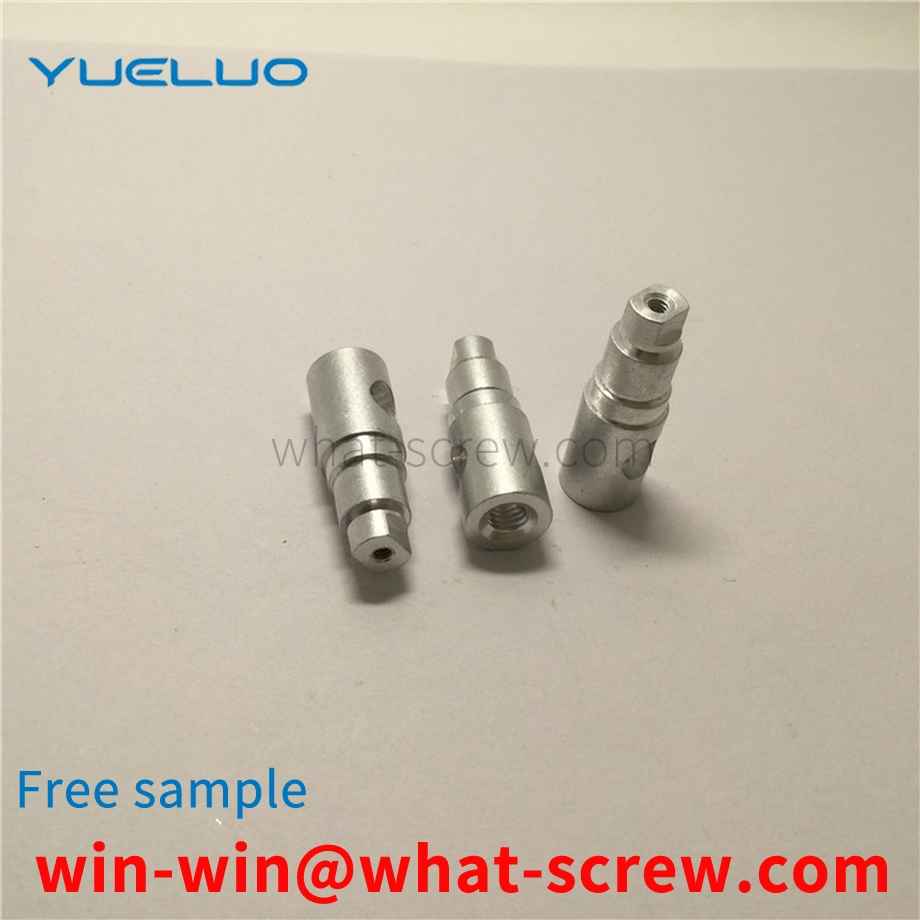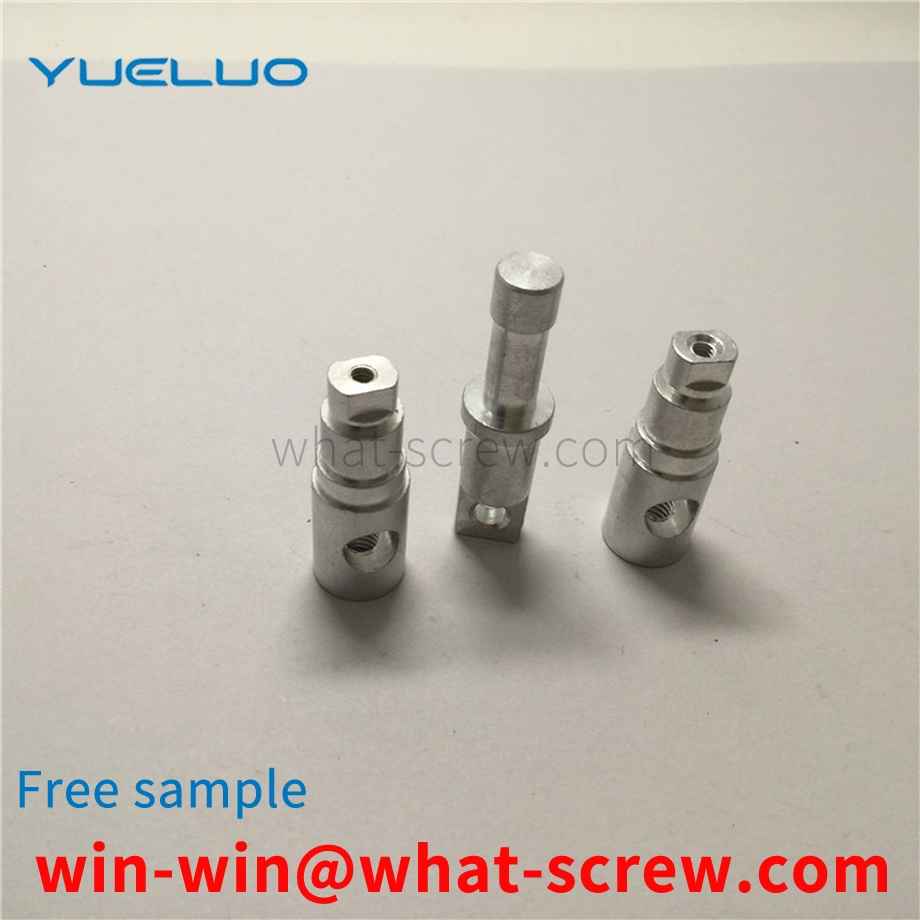The pressure riveting nut is divided into free-cutting steel pressure riveting nut S type, stainless steel pressure riveting nut type CLS, stainless iron pressure riveting nut SP type and copper and aluminum pressure riveting nut CLA type, which should be used in different environments. . Sizes are usually from M2 to M12. There is no unified national standard for rivet nuts, and they are often used in chassis cabinets and sheet metal industries. S series, CLS series, SP series pressure riveting nuts use the internal thread as a simple method to install in precision sheet metal products, and use small and precise nuts for reliable fixing to completely process the side plate of the sheet metal. The nut is inserted into the hole of the metal plate, and the inlay strengthening function is completed by pressure. Application advantages 1. The back of the plate remains completely flat; 2. Small size and precision, suitable for all electronic or precision equipment; 3. High torque resistance; 4. Easy equipment, simple riveting; 5. Standardized serialization can meet various design requirements .
Screws can be divided into machine screws, self-tapping screws, drill-tail screws, wallboard screws, fiberboard screws, wood screws, hexagonal wood screws, non-prolapse screws, combination screws, miniature screws, furniture screws, and electronic screws. Divided into 1. Hexagon head (hexagon head) 2. Hexagon head with flange (hexagon head with flange) 3. Square head (square head) 4. T head (hammer head) 5. Oblate head mushroom head ( truss head) 6. cylindrical head (cheese head) 7. round head (round head) 8. pan head (pan head) 9. countersunk head (flat head) 10. raised countersunk head (oval according to the groove type) Can be divided into 1. Philip 2. Ten / one word 3. One word 4. Inner triangle 5. Inner corner square 6. Cross 7. Rice word 8. Flower shape 9. Plum shape 10. Flower shape one word 11. Special shape 12. Inside Hexagon
Although this structure can prevent the shaft from rotating radially to a certain extent, it also has some obvious defects: firstly, the positioning block needs to be opened during processing, and secondly, the opening of the positioning block needs to be opened. After the deformation, the contact between the positioning block and the shaft becomes line-to-line contact, so that the contact area between the positioning block and the shaft is reduced, and the force generated to overcome the radial rotation of the shaft is correspondingly changed. less, so there is a risk that the shaft can turn radially.
The quality of electroplating is measured primarily by its corrosion resistance, followed by appearance. Corrosion resistance is to imitate the working environment of the product, set it as the test condition, and perform a corrosion test on it. The quality of electroplating products shall be controlled from the following aspects: 1. Appearance: Partial uncoated, scorched, rough, gray, peeling, crusted, and obvious stripes are not allowed on the surface of the product, and pinholes, pitting, and black plating are not allowed. Slag, loose passivation film, cracks, peeling off and serious passivation marks. 2. Coating thickness: The operating life of fasteners in corrosive atmosphere is proportional to its coating thickness. The general recommended thickness of economical electroplating coating is 0.00015in ~ 0.0005in (4 ~ 12um). Hot-dip galvanizing: the standard average thickness is 54 um (43 um for diameter ≤ 3/8), and the minimum thickness is 43 um (37 um for diameter ≤ 3/8). 3. Coating distribution: With different deposition methods, the aggregation method of the coating on the surface of the fastener is also different. During electroplating, the coating metal is not uniformly deposited on the peripheral edge, and a thicker coating is obtained at the corners. In the threaded portion of the fastener, the thickest coating is located on the thread crest, gradually thinning along the flank of the thread, and the thinnest deposit is at the bottom of the thread, while hot dip galvanizing is just the opposite, the thicker coating is deposited on the inside corners and On the bottom of the thread, mechanical plating tends to deposit the same metal as hot-dip plating, but is smoother and has a much more uniform thickness over the entire surface [3]. 4. Hydrogen embrittlement: During the processing and processing of fasteners, especially in the pickling and alkali washing before plating and the subsequent electroplating process, the surface absorbs hydrogen atoms, and the deposited metal coating then traps hydrogen. When the fastener is tightened, the hydrogen is transferred towards the most stressed parts, causing the pressure to build up beyond the strength of the base metal and producing microscopic surface cracks. Hydrogen is particularly active and quickly seeps into the newly formed fissures. This pressure-rupture-penetration cycle continues until the fastener breaks. Usually occurs within a few hours after the first stress application. To eliminate the threat of hydrogen embrittlement, fasteners are heated and baked as soon as possible after plating to allow hydrogen to seep out of the plating, typically at 375-4000F (176-190C) for 3-24 hours. Since mechanical galvanizing is non-electrolyte, this virtually eliminates the threat of hydrogen embrittlement, which exists in galvanizing using electrochemical methods. In addition, due to engineering standards, it is forbidden to hot-dip galvanize fasteners with hardness higher than HRC35 (Imperial Gr8, metric 10.9 and above). Therefore, hydrogen embrittlement rarely occurs in hot-dip plated fasteners. 5. Adhesion: Cut or pry off with a solid tip and considerable pressure. If, in front of the blade tip, the coating peels off in flakes or skins, exposing the base metal, the adhesion shall be considered insufficient.
flat washer is a part that is placed between the connected part and the bolt to protect the surface of the connected part from being scratched by the nut and to disperse the pressure of the nut on the connected part. At present, a flat washer in the prior art generally includes a washer body; the washer body has a bolt hole in the middle for a bolt to pass through. Although the flat washer of the above structure has a simple structure, it still has a disadvantage. When the flat washer is cushioned between the connected part and the bolt, the bolt head is usually exposed outside the connection part, so the bolt head is easy to It is damaged under the impact of external force, thus affecting its fixing effect.
We have many years of experience in the production and sales of screws, nuts, flat washers, etc. The main products are: production screws, flat head expansion bolts, model connection tie rods, aluminum rods, double inner teeth nuts, nylon single-way copper columns and other products, we can help you Provide the right fastener solution for you.



















 Service Hotline
Service Hotline




